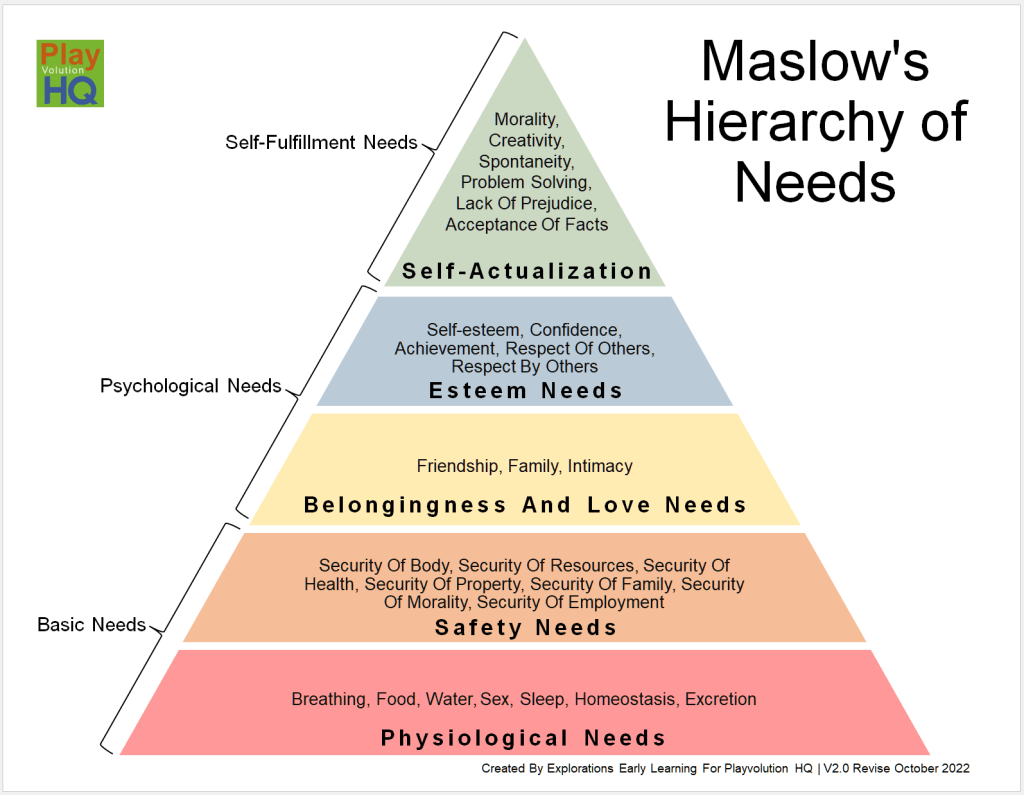
Risk is something children can observe, evaluate, and choose even though it may cause harm. For example, playing with a kitten is a risk a child can choose. At first glance, a kitten does not look dangerous. It looks like a playful ball of interesting fluff, but hazard lurks just out of site in the form of concealed razor-sharp claws and teeth.
Risk Is Beneficial
Early learning settings should not try to eliminate risk. They should help children build assessment skills.
Children need abundant opportunities to practice developmentally appropriate risk taking. Learning to effectively assess risk requires lots of real world practice. It’s difficult to be a skilled assessor of risk–to make thoughtful risk choices–at the age of thirteen or twenty-three if you didn’t get to practice when you were three.
This is done by helping them develop their observation and evaluation skills, so they can make informed risk decisions. For example, simply helping young Herman see that kittens do indeed have teeth and claws is valuable information he can use in deciding if he wants to play with the fur ball, Miss Fuzzy. Observing others handling her also provides him with useful kitten handling risk assessment data.
“Herman, do you want to hold Miss Fuzzy?”
“Yes, but her teeth and claws look sharp. And she uses them when she’s mad and sometimes when she’s happy and playing. I’m going to put on my hoodie and get some gloves from the workbench first to protect my arms and hands.”

Four Types
There are four types of risk children need to learn to make decisions about. Let’s take a look:
Physical
This is risk with the body. Things like playing with kittens, leaping off picnic tables, and climbing trees. Physical risk steals a lot of focus from the others in early learning settings, but they are all important.
Social
Social risks are risks involving people. For example, choosing not to play with Miss Fuzzy when all your peers are doing so is a form of risk. “I don’t want to play with the kitten because I’m scared of getting scratched, but I might get teased if I don’t do it, and they will all say I’m a scaredy-cat of cats.”
Emotional
These are risks involving feelings. “I don’t want to play with the kitten because it makes me sad because my kitten, Mr. Long Whiskers, ran away, and I miss him. I might cry from sadness if I feel Miss Fuzzy’s cold nose on my neck.”
Intellectual
These are risks involving ideas and thoughts. “I’ don’t’m not sure that I want to be around that kitten because Grandma says cats are bad luck” or “I’m going to make Miss Fuzzy scratch me, so I can get some cat superpowers.”
There is a lot of crossover between these four categories. For example, the child who feels playing with Miss Fuzzy would make him too sad may also be worried that he’ll get teased if he doesn’t play with her. It’s essential that early learning settings attend to all four categories. Many children need support in taking social, emotional, and intellectual risk–as well as physical–risks.

Mitigating Hazards
The job of adults is not to remove all risks from the environment. That’d be impossible, and hinder children’s development as capable risk-takers. Instead, adults should focus on mitigating hazards–those dangers that kids can’t readily see or predict. Thoughtfully managing hazards reduces the danger of risk taking.
Don’t Forget Maslow
Since risks are choices, adults should do their best to assure kids are in prime choice making condition. That means assuring their basic needs are met. Well rested, hydrated, and fed children who fell safe and secure tend to be better decision makers.

Assessment
Risk assessment is really about assessing hazards–those dangers kids are unlikely to see or predict on their own. Conducting a risk assessment involves taking a thoughtful look at an activity and attempting to see the things kids are unlikely to–and then taking steps to remove or lessen those hazards. Here’s a benefit and risk assessment I’ve put together to simplify the process:
A Few Related Quotes
Contribute content to Playvolution HQ
Brought to you by Explorations Early Learning
Thoughts On This Entry?
I’d love to hear your thoughts on improving this entry and suggestions for additional glossary additions in the comments below. You can also contact me with comments or concerns.
Related Content



Post Author
Jeff Johnson is an early learning trainer, podcaster, and author who founded Explorations Early Learning, Playvolution HQ, and Play Haven.






Leave a Reply